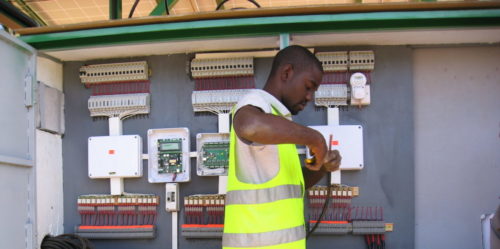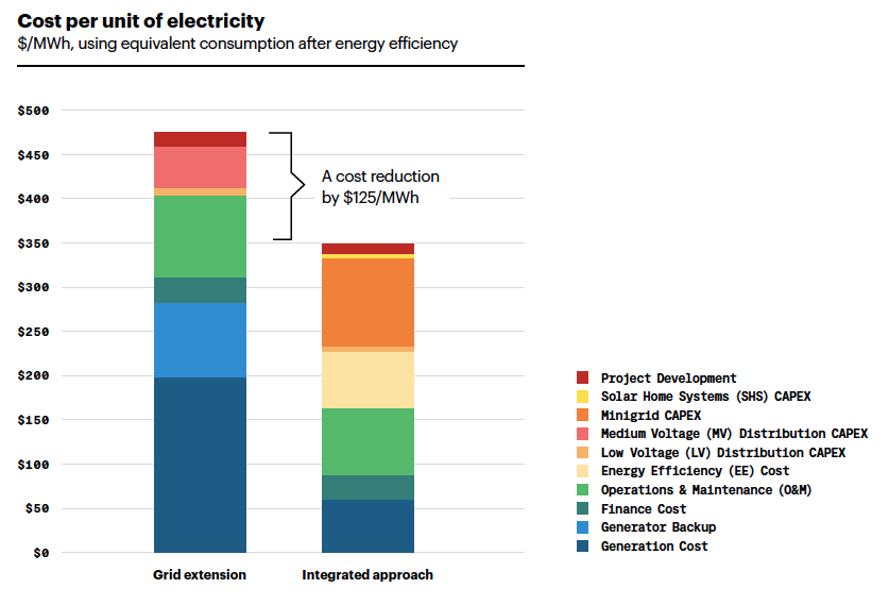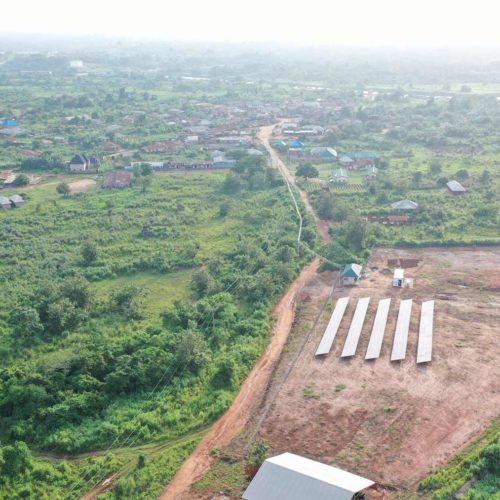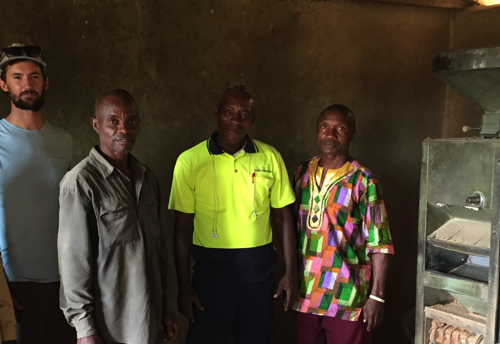
Achieving Universal Energy Access by 2030: An Integrated Approach
COVID-19 has magnified society’s inequities. It is crucial that we provide vaccines and essential healthcare to everyone. However, many countries face huge gaps in infrastructure development including a lack of access to electricity. This makes it impossible to turn on a light, let alone set up basic health clinics with enough power to keep coronavirus vaccines appropriately cold. Today, 800 million people have no electricity at all, and up to 1.5 billion more suffer from unreliable energy access. The economic contractions derived from COVID-19 may only exacerbate this reality.
We are now at the tipping point for a more aggressive and progressive approach to achieve universal energy access. We believe that the United Nation’s Sustainable Development Goal 7 (SDG7)—ensuring access to affordable, reliable, sustainable, and modern energy for all—is achievable by 2030. But how?
An Integrated Approach with Distributed Energy
The traditional method of electrification—fossil fuel-based electricity grids with centralized power production—is still valuable. However, there are new challenges and opportunities in providing energy access today. Emerging technologies add complexity to power systems, but also bring new and better solutions to issues endemic in these large, fragile systems. Think of problems such as power outages in California and Texas or reliability issues in sub-Saharan African countries where populations are relatively well-connected to energy grids. In these cases and others the traditional methods of providing electricity are being pushed to the limit.
One solution to providing reliable electricity access to all—both to those with unreliable power and those with no power at all—is integrating distributed energy resources into traditional centralized electrical grid systems.
The term distributed energy includes combinations of distributed generation, storage, and demand-side management, addressing both sides of the power system: supply and demand. On the generation side, the cost of providing power using distributed energy is falling quickly (and is often renewable in nature, although distributed energy is not inherently renewable by definition). On the demand side, demand-side management makes the most use of generation capacity and the power it produces, creating greater efficiency and less draw on overtaxed electrical grids. For those developing new energy systems, it makes both economic and environmental sense to employ distributed energy for electrification.
Furthermore, distributed energy does not function in competition with traditional grid infrastructure, but as a complement. When integrated with traditional power supplies, distributed energy provides the greatest, quickest impact for expanded electricity access. Compared with traditional approaches, distributed energy is:
- Faster to build: A 50 kW minigrid can be deployed in two months, instead of years or decades for large power infrastructure.
- More reliable: Minigrids report system uptime close to 99 percent, far higher than unreliable grid-edge power for traditional grid extension.
- Resilient: Solar panels and battery systems are already being used to keep the power on after major disasters, such as hurricanes and wildfires.
- Low carbon: Distributed energy provided by renewable energy avoids emissions from fossil-fueled grid supply.
Distributed energy is the future of modern energy, but risks being overlooked by those who favor the traditional electrification approach above all else.
The Rockefeller Foundation, SE4All, and RMI launched Electrifying Economies—a new interactive platform to draw attention to the role of distributed energy in electrification and to prioritize advocacy for an integrated electrification approach.
Comparing the Benefits and Challenges
Regardless of evidence of distributed energy’s benefits, doubts about the value of electrification via distributed energy still prevail. Barriers such as lack of scale, high financial risk for investors and developers, insufficient supply chain, limited standardization, and technologies that are not modular by design still exist. These obstacles must be overcome to successfully integrate distributed energy into our energy systems.
The Electrifying Economies website highlights solutions to these and other issues that have been implemented effectively in the field via a trove of case studies from a number of countries, agencies, and organizations. For example, a scalable undergrid minigrid in Mokoloki, Nigeria, reduces costs for the customer and utility while creating a development opportunity and a new minigrid market segment. And the Mlinda minigrid projects in Jkharkhand state in India have reduced capital costs by 45 percent in a single year. These projects provide electricity to 50 villages and 40,000 people and increase the income of newly electrified customers by 12 percent.
In some cases, a traditional grid extension does still make the best sense. However, integrated electrification approaches do not need to replace or compete with the traditional approach, but rather add on new elements to achieve an optimal system design. There’s not a one-size-fits-all solution for rural electrification, and yet, there are ways to make rural electrification more efficient and cost-effective for the whole of society.
Nothing is more persuasive than demonstrating by example. Via collaboration, coordination, and partnership with those on the ground in unelectrified communities, we modeled electrification of a district using two methods: grid extension alone and an integrated approach with a distributed energy system. Our modeled district is constructed of four villages with both rural and peri-urban access problems as well as grid reliability challenges. With the premise that providing sufficient and reliable power enables social and economic development, the study builds a cost comparison for establishing the power system via these two separate approaches.
In this electrification case, the integrated approach reduces the whole system cost of providing adequate, reliable electricity by US$0.125/kWh. The total cost of the integrated approach is $490,000 per year, compared with the annual cost of grid extension at $660,000.
Although the results of this analysis are specific to the modeled scenario, the research shows that distributed energy is likely a cheaper electrification option in communities that have relatively low demand and are far from grid infrastructures.
The main findings from this cost comparison include:
- The integrated approach uses distributed energy systems to provide significant cost savings in the provision of adequate and reliable universal access.
- Compared with the traditional grid extension approach, the integrated approach requires significantly higher upfront capital cost, but has great economic advantages in operational costs.
- Effective demand stimulation is needed for affordability, as communities with high consumption levels have lower cost for power in general.
- Energy efficiency is an essential driver for cost reduction.
- Proper utilization of solar home systems magnifies the cost advantage of an integrated approach—not every household needs to be connected to a high-powered grid (although every village should be).
- Huge opportunities exist for demand shaping to increase solar utilization, which will further reduce system costs.
The Way Forward
The precise costs and the design of the optimal approach to electrification will look different in every region, depending on the physical layout and the energy demand of the communities served. That’s why we advocate for conducting cost comparison and sharing the methodology and parameters of economic analysis for electrification. And the energy demand itself needs to be studied further, which we will discuss in a future blog.
To electrify the people in the hardest-to-reach rural regions, or upgrade energy services in areas with unreliable power supply, integrated approaches are likely to win the day. Distributed energy can provide significant savings and greater reliability when added onto the edges of traditional grid infrastructure.
We encourage you to read our Detailed Cost Models and Benchmarks study and scroll through the Electrifying Economies web narrative for a deeper dive into this discussion.


